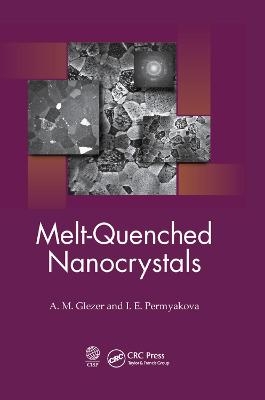
Melt-Quenched Nanocrystals
Seiten
2019
CRC Press (Verlag)
978-0-367-37992-6 (ISBN)
CRC Press (Verlag)
978-0-367-37992-6 (ISBN)
Melt quenching—the method of quenching from the liquid state—provides new opportunities for producing advanced materials with a unique combination of properties. In the process of melt quenching, attainment of critical cooling rates can produce specific structural states of the material. Nanocrystalline materials produced by melt quenching are classified as nanomaterials not only by their nanoscale structural elements but also by the effects these elements have on the properties of the material.
The result of 30 years of research, Melt-Quenched Nanocrystals presents a detailed and systematic analysis of the nanostructured state formed in the process of melt quenching and subsequent thermal and deformation effects. It covers the metallurgical and mechanical properties of nanomaterials, focusing particularly on properties derived from nanocrystals and their agglomeration. The text introduces four different types of nanocrystals that can be produced by melt quenching, each having different structures and properties:
Type I nanocrystals formed when crystallization takes place completely during melt quenching
Type II nanocrystals formed when melt quenching is accompanied by amorphous state formation along with partial or complete crystallization
Type III nanocrystals formed when melt quenching results in the formation of the amorphous state, and nanocrystals can be produced as a result of the subsequent thermal effect
Type IV nanocrystals formed when melt quenching leads to the formation of the amorphous state, and nanocrystals can be produced as a result of the subsequent deformation effect
The possible uses for these materials are extensive, with applications from coatings to biological compatibility. The final section of the book presents a discussion of existing and future applications of nanocrystals produced by different melt-quenc
The result of 30 years of research, Melt-Quenched Nanocrystals presents a detailed and systematic analysis of the nanostructured state formed in the process of melt quenching and subsequent thermal and deformation effects. It covers the metallurgical and mechanical properties of nanomaterials, focusing particularly on properties derived from nanocrystals and their agglomeration. The text introduces four different types of nanocrystals that can be produced by melt quenching, each having different structures and properties:
Type I nanocrystals formed when crystallization takes place completely during melt quenching
Type II nanocrystals formed when melt quenching is accompanied by amorphous state formation along with partial or complete crystallization
Type III nanocrystals formed when melt quenching results in the formation of the amorphous state, and nanocrystals can be produced as a result of the subsequent thermal effect
Type IV nanocrystals formed when melt quenching leads to the formation of the amorphous state, and nanocrystals can be produced as a result of the subsequent deformation effect
The possible uses for these materials are extensive, with applications from coatings to biological compatibility. The final section of the book presents a discussion of existing and future applications of nanocrystals produced by different melt-quenc
Glezer, A. M.; Permyakova, I. E.
Introduction. Melt-quenched nanocrystals (type I nanocrystals). Nanocrystals produced by melt quenching at rates close to critical (type II nanocrystals). Nanocrystals produced by controlled annealing of the amorphous state (type III nanocrystals). Nanocrystals produced by megaplastic deformation of the amorphous state (type IV nanocrystals). Application of melt-quenched nanomaterials. Index.
| Erscheinungsdatum | 18.09.2019 |
|---|---|
| Verlagsort | London |
| Sprache | englisch |
| Maße | 156 x 234 mm |
| Gewicht | 684 g |
| Themenwelt | Naturwissenschaften ► Biologie |
| Naturwissenschaften ► Physik / Astronomie ► Festkörperphysik | |
| Technik ► Maschinenbau | |
| ISBN-10 | 0-367-37992-9 / 0367379929 |
| ISBN-13 | 978-0-367-37992-6 / 9780367379926 |
| Zustand | Neuware |
| Haben Sie eine Frage zum Produkt? |
Mehr entdecken
aus dem Bereich
aus dem Bereich


